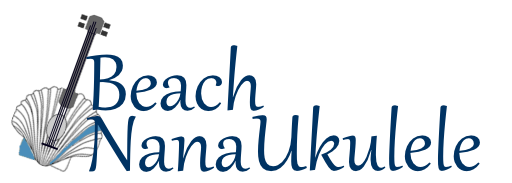
Library Topics
To view contents of each topic, click on the “+” to open the accordion file.
-
An easy alternative to remembering all those chord forms.
-
Chords have chord diagrams but what if you want to read or write down a solo, intro, or bridge? You could use standard notation if you know it, but there is an easier music notation for Ukulele - Show me all about Tablature!
-
Learn about the relationship between these three elements of music.
-
Why are there sharps and flats? It all starts with the scale interval.
-
Where do 7th chords fit into the chord family?
You’ve already learned C7 and G7, and you might be wondering how they fit into the chord family. The dominant seventh chords are an alternate form of the V (5) chord in a chord family. In the key of C, the V (5) chord is G and you learned G7 as part of the song Jambalaya in the key of C. You could play that song with G, but the G7 adds a little something extra to the G chord. Instead of the final sound of a G major, the G7 provides a more open-ended sound, like there is something more to come - often it pulls us back to the I (C) chord. Dominant seven chords can also be used as “stand-in” chords for minor chords in a chord family. So in the key of C, the minor chords are Dm, Em, and Am - all can be replaced with their 7 versions: D7, E7, and A7.
Even though 7 chords are not listed in the key or chord family ‘line up’ you can be sure that they are welcome additions to the family!
-
Build finger strength and dexterity with these simple warm-up exercises.
-
Stretching your fingers, hands, and wrists can help to prevent injury. You’ll also find it can improve your playing!
-
A couple of exercises to help with chording.
-
Several ways to tune your uke to the appropriate G, C, E, A tones.
-
So many brands and so many different types of strings, it can be confusing to choose which string is right for you.
